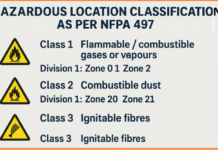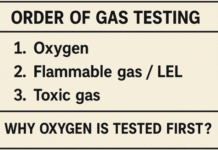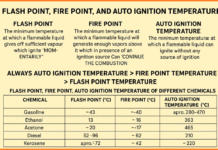There are thousands of cold metal working machines, machine tools, and methods for various machine operations for general and special which require individual guard design, treatment, and different principles. The safety aspect of such machines cannot be covered in one chap, therefore, some common principles and methods guarding are discussed below. An efficient engineering design and application are essential.
The five functional methods of cold working of metals are pressing or punching, shearing or puncturing, rolling, bending and hammering.
- Pressing or punching consists of forming, shaping, cutting or assembling metal by means of tools or dies attached to plungers or other moving parts. Various types of power presses, hydraulic presses, and pneumatic presses are included here.
- Shearing consists of cutting metal by the shearing action of movable knives. They may hay straight or bevel edge blade. Shearing action may be of a guillotine knife, the sliding action of scissors or the rolling action of the rotating disk. Squaring shears, plate shears, guillotine shears, alligator shears, rotary shears, circular shears, disc shears, and rotary slitters are included here.
- Rolling consists of forming or shaping, drawing or reducing the thickness of metal by bringing it to contact with the revolving power have driven rolls. Beading rolls, straightening rolls, corrugating roll, beading rolls, flanging rolls, wire drawing, and hot or cold rolling mills are included here.
- Bending (braking) consists of 01: bending or forming sheet metal by means of a tool or die usually actuated by a ram. Some brakes operate like press and some like a guillotine shear. Brakes are known as press brakes or apron brakes and are also identified by their operation e.g. folders, flanker, corrugators or crimpers.
- Hammering consists of forming, shaping or breaking metal by means of gravity or power-operated plungers which may or may not be fitted with a die, the metal to be formed resting on n anvil or a die. The plunger may be raised by mechanical, steam, hydraulic or pneumatic power.
The most dangerous part or zone is the point of operation and the purpose of point of operation guarding to prevent injury to the operator at the part of the machine where above-mentioned operations are carried out. Seven principles of such guarding are
- Design and construct tools so that the guards may not be needed.
- Provide mechanically feeding device.
- Provide mechanical feeding device.
- Provide a device that prevents or interrupts the movement of tools when the operator is in the danger zone.
- Provide remote control operating mechanism.
- Provide device (guard) that removes the body part safely from, the danger zone.
- Combination of these devices to achieve full protection.
Principles of safe machine design. Individual motor drive, elimination of manual operation in the hazardous zone, safe location, safe arrangement and position of machines and their dangerous parts, guarding of prime mover and transmission mechanism, ergonomic design, and follow-up of the statutory provision and Indian standards are all useful to prevent the machine accidents.
We saw that the point of operation is the danger zone which requires effective guarding. The best course is to provide a fully automatic feeding and ejecting device at such point so that the man-machine contact is avoided. A hopper, magazine, feed roll or similar device should be designed and applied. If this is not possible, provide semiautomatic feeding device a chute, slide, sliding die, dial or similar device which feeds to the point of operation. If this is also not possible, manual feeding may be permitted with appropriate guarding and precaution. Automatic feeding and automatic ejection of the material will allow the danger zone to be fully enclosed (as the operator does not need to place his hands there) and full concentration on production (as no fear of injury), thus increasing safety and productivity both.
Contents
Presses, Shears and other Machines:
Hand and presses are generally hand or foot (kick) operated and are used for blanking, forming, punching, etc, mostly on metal but also on leather cardboard plastics and pastry. An accident may take place if the operator’s attention is distracted the work is jammed in the die, the ram descends due to slackness in guides and insufficient frictional resistance, the mistake of one operator if two operators work on the same press. Their safety devices include:
- Closed tools, fixed guards and restricted stroke.
- Interlock guards.
- Pendulum and sweep away the device.
- The automatic device which arrests ram.
- Two hand control.
- Firm foundation and mounting of the press.
- Sufficient spacing or screens to prevent other workers from coming into contact with moving parts.
- The ram should not descend due to gravity.
- Regular inspection and maintenance and
- Good training and supervision.
Power Press
Power presses are used in metal pressing, stamping, piercing, drawing, forming, molding, riveting, coining, assembling, stacking, burnishing, trimming, sizing, flanging, bending, straightening, horning, forcing, flanging, bending, straightening, swaging, planishing, punching, extrusion, etc. The power may be mechanical, hydraulic or pneumatic.
Types of Guards recommended for power presses are as under:
- Starting and stopping mechanism to prevent over-running of the press or descent of the ram during tool setting etc. A brake to stop ram in the upper position and an arrestor brake to arrest the movement of the crankshaft and flywheel are also necessary.
- Protection of tool and die by means of a fixed guard with a slip plate to enclose the front and side of the tool, fixed guard surrounding the die with back tunnel for falling the pressed article to the feeding device through a chute or otherwise at the bottom of the die guard, an efficient automatic or interlock guard in place of a fixed guard if the fixed guard is not possible.
- Fixed die-enclosure guard.
- Fixed barrier guard to allow ready access to the die. The pivoting or sliding section must be interlocked with the press control to prevent operation of the machine when the section is open.
- Adjustable barrier device attached to the frame of the press and which can be adjusted for dies of almost any size.
- Gate or movable barrier device to enclose the point of operation before the clutch can be engaged.
- Auxiliary point of the operation device.
- Two hand tripping device requiring constant pressure till the slide has reached the bottom of the downstroke.
- Sweep the device to push hands out of the point of the operation zone. Such a device is activated by the slide through linkage and may have a single or double arm.
- Pull back, pull out or pull away device to pull backhands as the slide descends. Such a device should be adjusted to each job because of variation.
- Electric or electronic device to prevent the pressure from cycling. Such a device can be used only on presses having friction clutches with brakes to stop the press at any point of slide travel. It is not effective on punch presses with positive clutches because no device can prevent completion of the cycle one its stars.
- Photocell device operating on the interruption of the light beam near the danger zone.
- The pedal guard over the foot pedal or switch button. A spring closed door requiring positive pressure in such guard provides further safety.
- Instead of the foot pedal, if the hand lever is used, a spring latch to prevent accidental or premature tripping should be provided. If there is more than one operator, the hand lever should be interlocked.
- A press with a positive clutch should have a single stroke attachment which disconnects the pedal or operating lever after each stroke.
- When the press is used on the continuous operation by making the single stroke or non-repeat device inoperative, the die should be completely enclosed regardless of the method of feeding and ejecting device to avoid the use of hands between die and punch. The six semiautomatic feeds are chute (gravity and follow), plunger, slide or push, sliding dies, dial and revolving die. The best method of ejection is usually pick-up fingers or compressed air.
- Hand-feeding tools such as vacuum cup, tong, magnetic rod, etc. to put and take small parts to and from a punch press.
OTHERS POWER PRESS MACHINES
HYDRAULIC AND PNEUMATIC PRESSES
WIRE DRAWING OPERATIONS






